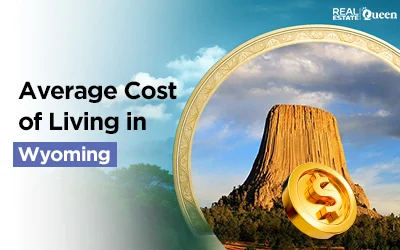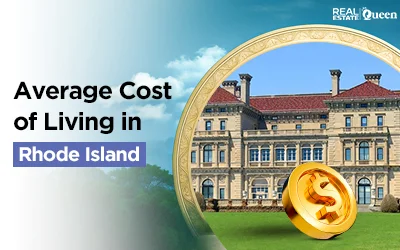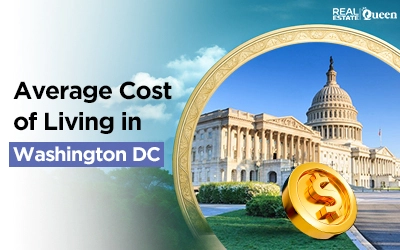
Thinking of moving to Utah? The average cost of living in Utah in 2025 has a cost-of-living index of about 95.8, below the national average. With vibrant cities like Salt Lake City, Provo, and Ogden, the state offers a mix of affordability and opportunity. This makes Utah an attractive option for households.
Utah balances quality of life with reasonable expenses across housing, utilities, and transportation. Residents can enjoy a variety of amenities without overspending. Overall, the state offers a compelling mix of affordability and lifestyle benefits.
TL;DR: Average Cost of Living in Utah 2025
- Cost-of-living index: 95.8 (below the U.S. average)
- Average monthly rent: $1,806
- Median home price: $530,804
- Average required annual salary: $83,000 to $86,000 for a middle-class lifestyle
- Average monthly utilities: $85–$90
- Competitive costs: Transportation, groceries, and healthcare below or near peer states
- More affordable than: Arizona and Colorado
- Slightly more expensive than: Wyoming and Texas
Understanding the Average Cost of Living in Utah
To live comfortably across Utah’s major economic hubs, such as Salt Lake City and Provo, residents typically need an annual salary between $83,000 and $86,000. This range supports a middle-class lifestyle that balances housing, utilities, transportation, and other essentials.
For example, key monthly expenses include:
- Rent: Around $1,806 on average for a two-bedroom apartment.
- Utilities: Approximately $85 to $90, thanks in part to renewable energy usage.
- Groceries: Competitive prices, lower than in Arizona and Colorado, keeping food costs manageable.
- Transportation: Fuel and insurance rates tend to be lower than in many peer states, helping keep daily commutes affordable.
Thus, these figures make Utah an economically sensible option for growth and living quality.
Housing and Rental Market in Utah
Finding affordable housing in Utah poses both challenges and advantages, depending on the region. The average rent is $1,806 per month, while the median home price sits near $530,804.
So, how does Utah stack up against nearby states?
- Idaho rent is much lower at about $1,027 (−43% vs. Utah).
- Colorado rent closely matches Utah’s at around $1,810 (+0.2%).
- Wyoming’s rent is notably cheaper at $922 (−49%).
- Arizona rent is slightly higher at roughly $1,865 (+3%).
- Texas maintains lower rent levels near $1,300 (−28%).
When it comes to home prices:
- Idaho median home price: ~$445,000 (−16%).
- Colorado median home price: ~$543,106 (+2%).
- Wyoming median home price: ~$353,826 (−33%).
- Arizona median home price: Roughly 15% above U.S. average (~$390K–$400K).
- Texas median home price: Approximately 16% below the national average (~$330,000).
Within Utah, markets differ by area—Salt Lake City offers more urban conveniences, Provo attracts tech professionals, and places like Ogden offer a more affordable suburban feel.
👉 Looking for homes for sale in Utah that match your budget? Discover the latest listings with advanced search filters and sorting options on Houzeo, America’s best home buying website.
Utilities and Other Living Expenses in Utah
Utah benefits from relatively low utility costs, largely due to its renewable energy initiatives.
- Average monthly utilities: $85–$90.
- Idaho utilities are about 20% lower than the national average, slightly below Utah’s.
- Colorado utilities are roughly 14% below the national average, comparable with Utah.
- Wyoming utilities are around 10% below the national average, often lower than in Utah.
- Arizona’s utilities are about 4% above the national average.
- Texas utilities hover near 1% above the national average.
As for groceries and food costs, Utah remains below Arizona and Colorado levels, making day-to-day living more affordable.
Transportation costs are lower here due to discounted fuel and insurance rates. Compared to peer states:
- Arizona transportation costs about 7% above average.
- Colorado transportation is approximately 20% higher than Utah’s.
- Texas transportation costs are about 6% below the national average.
Additionally, healthcare expenses in Utah are moderate, generally below costs seen in Arizona and Colorado, and on par with Texas and Wyoming.
Income and Job Market Overview in Utah
To comfortably afford Utah’s living expenses, a middle-class salary in the range of $83,000 to $86,000 is the target. This requirement is attractive when compared regionally:
- Arizona demands higher income due to elevated housing and childcare costs.
- Wyoming and Texas require less income but lack Utah’s economic dynamism.
Utah’s strong economy, especially its growing tech sector centered around Salt Lake City and Provo, supports upward income growth and employment opportunities.
Is It Worth It to Live in Utah?
Utah successfully balances affordability with economic vitality and quality of life. Compared to Western peers:
- More affordable housing and transportation than in Arizona and Colorado.
- Moderate utilities, groceries, and healthcare costs.
- Strong job market with good salaries, especially in technology and services.
Therefore, this makes it an excellent choice for professionals and families seeking a vibrant lifestyle without big-city cost premiums.
Regional Insights and Relocation Tips
For newcomers:
- Salt Lake City offers urban amenities and a tech-driven job market.
- Provo features a mix of educational institutions and tech opportunities.
- Ogden and surrounding areas provide affordable housing with a more suburban feel.
Consider local economic hubs’ cost variations and job availability when planning your move. Also, explore state-specific housing and rental guides to find the best fit.
Final Thought on Utah’s Average Cost of Living
Utah in 2025 presents a thoughtfully balanced cost of living compared to its peer states. While not the cheapest option, its affordability relative to quality-of-life offerings makes it stand out. Housing and utility expenses remain reasonable, and income prospects are promising in key metros.
While Wyoming and Texas are cheaper on housing, Utah’s employment prospects and quality of life deliver compelling value. For those weighing options in this region, Utah’s balance of affordability and opportunity makes it a smart move.
👉 Browse the latest Utah homes for sale on Houzeo and match your budget with your dream neighborhood.
FAQs About Utah’s Average Cost of Living
Is Utah an expensive state to live in?
Utah’s cost of living index is below the national average, signaling moderate affordability.
How much salary do I need to live comfortably in Utah?
To maintain a middle-class lifestyle in Utah, you generally need an annual income between $83,000 and $86,000.
How does Utah’s housing market compare to neighboring states?
Utah’s housing market is more expensive than Wyoming and Texas, but still more affordable than Arizona and Colorado.
Are utilities expensive in Utah?
No, utilities in Utah are reasonably priced, averaging $85 to $90 per month. The state benefits from renewable energy sources, helping keep costs lower than in several neighboring states.
What is the average rent in Utah in 2025?
The average rent for a two-bedroom apartment in Utah is around $1,806 per month.






